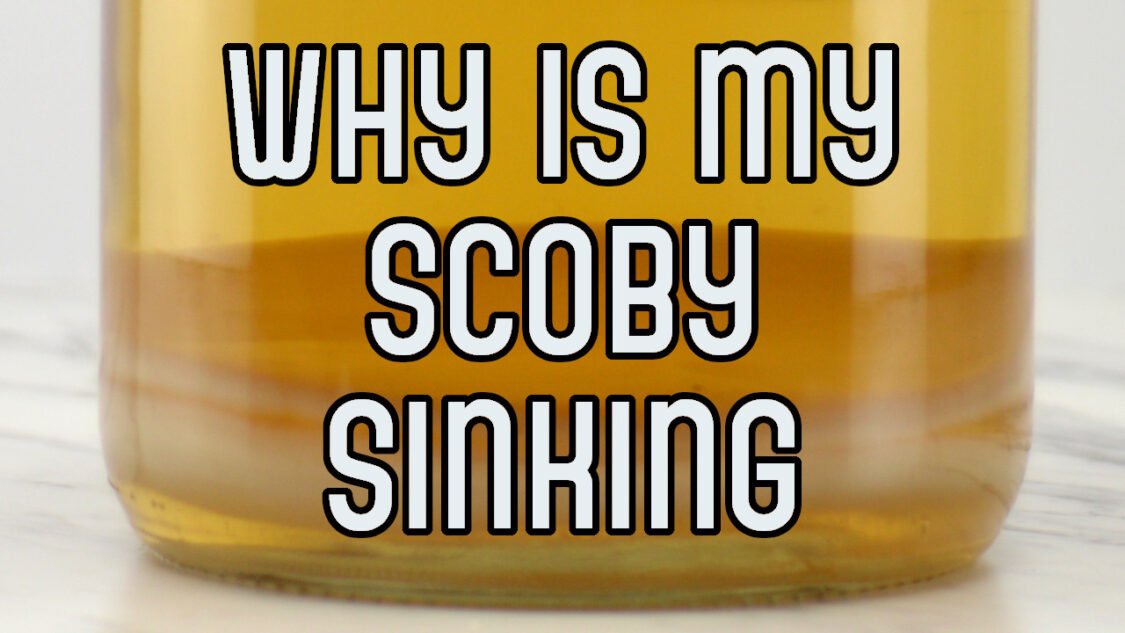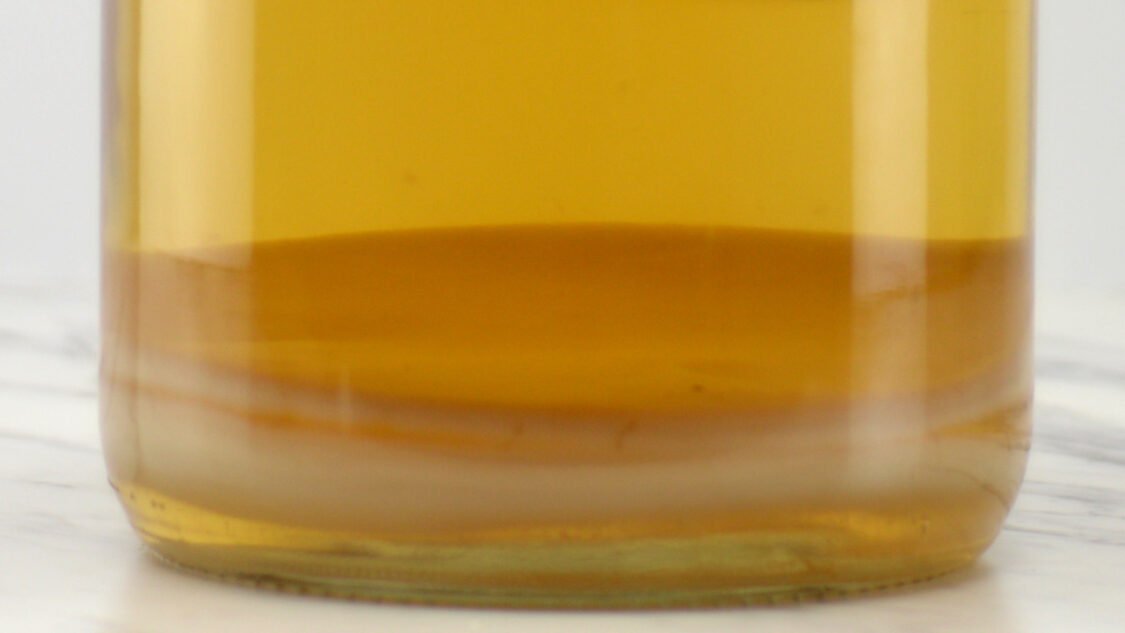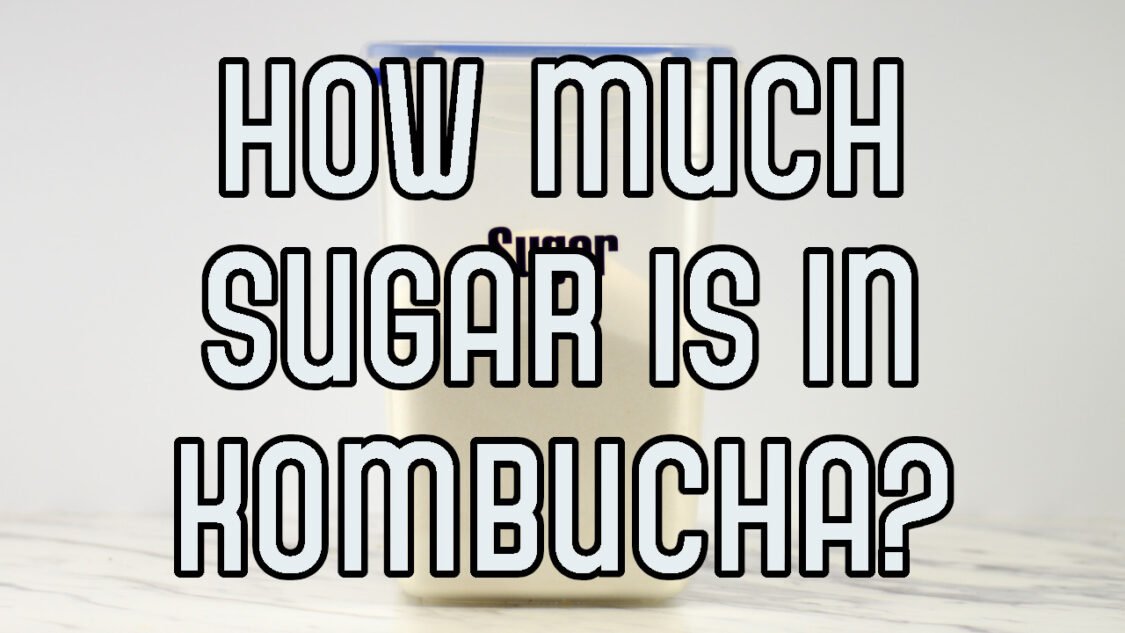Why is my SCOBY sinking?
What does it mean if your kombucha starts sinking or totally sunk? Is it dead? Is there anything I should do to fix it?

A frequent question I get from friends that brew kombucha is “Why is my SCOBY sinking?”
There are several variations of this question:
- My SCOBY was floating and now it’s starting to sink, what should I do?
- My kombucha SCOBY sank to the bottom, is it dead?
- Is my SCOBY dead?
- What should I do about my SCOBY sinking?
Before going any further I want to reassure you that you can relax, it’s normal for the Kombucha SCOBY to sink.

Why Is My SCOBY sinking?
Recall that a kombucha SCOBY (What is a Kombucha Scoby?) is a symbiotic colony of bacteria and yeast in and on a mat of cellulose typically floating on the surface of the fermenting tea.
The SCOBY is beneficial to protect the tea from airborne contaminants from above and give the bacteria and yeast access to the oxygen they need to survive.
Whether or not your kombucha SCOBY floats or sinks (or both) during the fermentation process has no impact on the outcome of the final product. Your SCOBY may float, sink or hover in the middle and the the position of the SCOBY should not be used as an indicator into the health of your kombucha batch.
At various times throughout the fermentation process, the SCOBY may be in a different position in the fermenting kombucha. I’ve noticed that when the SCOBY is added to the sweetened tea and starter liquid it will often sink to the bottom. As fermentation progresses it will float back to the top, or even be replaced by a new SCOBY that will float on the top.
When you add the SCOBY to the sweetened tea, the beneficial bacteria and yeast are introduced via the surface of the SCOBY. These bacteria and yeast multiply rapidly and spread throughout the liquid and cause fermentation to begin. With each new batch, a new SCOBY will start slowly forming on the surface (sometimes attached to the initial SCOBY) and thicken over time.
Common reasons why a SCOBY sinks
- Adding a SCOBY to fresh tea – in this case the weight of the SCOBY is greater than what can be supported by the air dissolved in the tea. Over time the CO2 produced by fermentation may push it back to the surface (it’s OK if it doesn’t)
- Sudden temperature drop – if you SCOBY starts off floating and starts to sink during fermentation it could be due to a drop in temperature. The ideal temperature for fermenting great kombucha is 75-85F. Lower temperatures will cause the yeast to become less active and create less CO2 which can keep the SCOBY afloat.
- Density of the SCOBY – the density of a SCOBY varies throughout the fermentation process and from batch to batch. The density changes may be a result of a spike in the concentration of one microbe over others during fermentation which results in a change in the density of your SCOBY, causing it to sink or float.
The density can be affected by the fermentation temperature, amount of sugar, starter tea, age and health of SCOBY and variety of tea used.

Signs of an unhealthy SCOBY
While a sunken SCOBY does not indicate an unhealthy SCOBY, there are a few signs you should look out for:
- Dry or fuzzy (circular) patches, which would indicate mold
- White, gray, green, or black areas, which would also indicate mold
- A completely black or shriveled SCOBY, which could mean a dead SCOBY (this is rare)
What Should I do if my SCOBY is Sinking?
Relax, it is totally normal for a SCOBY to sink and there is no reason to do anything unless it looks unhealthy.
Helping you learn to brew kombucha, find inspiration for new kombucha flavors and use kombucha to make kombucha mocktails




